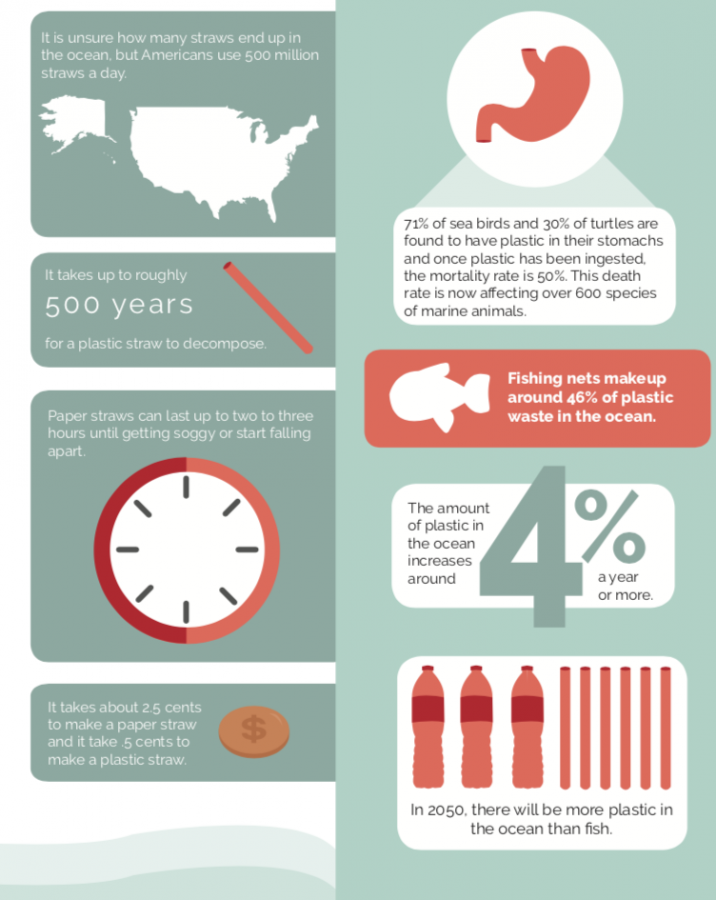The Final Straw
October 16, 2018
In 2015, a video of a marine biologist pulling a plastic straw out of a sea turtle’s nose, amassed 32 million views on YouTube, and sparked a massive uproar against straws, as the sea life appears to be struggling with its new guest.
The no straw movement first began to circulate in 2011 after a young boy conducted an unofficial study, stating that Americans use 500 million plastic straws a year. His research became a popular, sparking no straw movements, but they eventually died out.
However, thanks to the use of social media to spread images of marine wildlife being injured by straws gave the no-straw movement new life in the beginning of 2018. These images brought about change, as many companies and cities like Starbucks and Seattle, Washington, have imposed straw bans. Straw bans eliminate straw usage by no longer offering them as an option.
Unfortunately, the ocean is not the only habitat disrupted by straws and other single use plastics. The human body is impacted by the effects of plastics, as according to the United States Center for Disease Control 93% of people have BPA in their body. BPA is a harmful chemical emitted by plastics that we encounter everyday through breathing, drinking water, and eating. According to Olathe North Geoscience teacher, Ms. Winsor, “polyethylene is the primary component of most plastics… [and] is a known cancer causing substance,” which we consume when eating fish who have mistakenly ingested plastic.
For long lasting environmental preservation, eliminating plastic waste can be a promising step, but for disabled people straws can be the difference between life and death. Without straws, disabled people can aspirate liquid in their lungs causing pneumonia which can be fatal, as reported by National Public Radio.
Following this new wave of rebellion against plastic straws, the disabled community spoke on why they depend on single use plastic straws. Many people with motor disabilities and limited jaw movement depend on single use plastic straws to drink safely.
There are steps that can be taken to reduce plastic waste like using plastic straw alternatives, recycling, and simply deciding not to use a straw at restaurants. There were times when you couldn’t recycle straws, but as directed by Ms. Winsor “all you need to do is give it a quick rinse before throwing the straw in your curbside recycling bin.”
However, in the Ocean Conservancy’s International Coastal Cleanup Report, straws accounted for only 4,000 of 9,159,400 items collected. According to Environmental Health News, the main culprits of plastic pollution in the ocean is fishing nets and micro-plastics.
Micro-plastics are tiny particles of plastic that have been broken down small enough that marine life unintentionally eats it. Micro-plastics are damaging to marine life, and to people who eat seafood where micro-plastics are present. Fishing nets makeup around 46% of plastic waste in the oceanaccording to the National Geographic, as commercial fishermen often drop their nets into the ocean if they break, even though they are not biodegradable.






